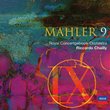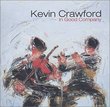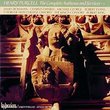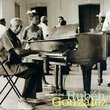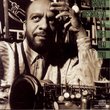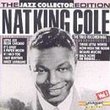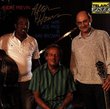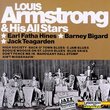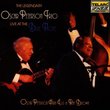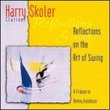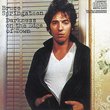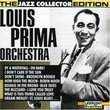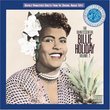| All Artists: Artie Shaw Title: Artie Shaw: The Complete Gramercy Five Sessions Members Wishing: 0 Total Copies: 0 Label: RCA Release Date: 10/25/1990 Genres: Jazz, Pop Style: Swing Jazz Number of Discs: 1 SwapaCD Credits: 1 UPCs: 078635763720, 035628763723, 078635763744 |
Search - Artie Shaw :: Artie Shaw: The Complete Gramercy Five Sessions
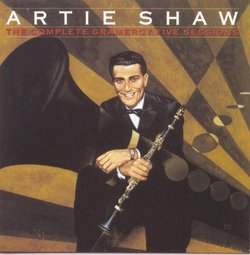 | Artie Shaw Artie Shaw: The Complete Gramercy Five Sessions Genres: Jazz, Pop
Many of the big-band leaders of the swing era featured a small group from within the band, a throwback to their own origins in "hot" jazz. Artie Shaw's Gramercy Five, though, was an exceptional combo, as distinctive in its... more » |
Larger Image |
CD DetailsSynopsis
Amazon.com Many of the big-band leaders of the swing era featured a small group from within the band, a throwback to their own origins in "hot" jazz. Artie Shaw's Gramercy Five, though, was an exceptional combo, as distinctive in its way as Benny Goodman's trio, quartet, and sextet. While the purpose of such bands was blowing, something Shaw did brilliantly, the clarinetist also used the opportunity for striking instrumentation. The first eight tracks come from 1940 and the first version of the group. Trumpeter Billy Butterfield adds assorted mutes to vary his glorious open trumpet sound, while pianist Johnny Guarnieri turns exclusively to harpsichord. As with Shaw's unusual use of a string quartet in 1936, the inclusion of harpsichord is genuine innovation, not just novelty, and it becomes even more striking when Shaw adds electric guitarist Al Hendrickson. The result is classic small-band swing that can't be readily placed in time. The final seven tracks come from 1945, including two takes of "Mysterioso" --a harmonically advanced Shaw composition, not the Monk tune. Shaw was always a kind of proto-modernist, and here the band includes the explosive swing trumpeter Roy Eldridge and two young boppers, pianist Dodo Marmarosa and guitarist Barney Kessel. --Stuart Broomer Similar CDs
Similarly Requested CDs
|
CD ReviewsUnique small band swing from a master musician Ryan Harvey | Los Angeles, CA USA | 03/12/2004 (5 out of 5 stars) "Artie Shaw is one of the geniuses of American popular music. He was always searching for ways to expand and experiment, and he chafed at the restrictions of the music industry. He disbanded one the most popular swing orchestras in history when he could no longer tolerate the business side of music making. But until the 1950s, he always found himself drawn back again and again to the music world, and each time he brought something new the to mix. His recordings with his small group "The Gramercy Five" in the 1940s, all of which are presented on this wonderful CD, show him as a great jazz innovator, superb swing artist, and one of the finest clarinets ever to pick up the instrument. Jazz fans, swing dancers, and lovers of the big band period will all thrill to the unique music captured in these sessions.Many of the big bands of the day had a "band within the band," a small group which recorded outside of the main orchestra. Benny Goodman had his trio and quartet, Tommy Dorsey had the Clambake Seven, and Count Basie made recordings with just his rhythm section. But Artie Shaw and His Gramercy Five stands as the most original and fascinating of these bands. There were two Gramercy Five groups. The first, which comprises tracks 1-8 of this CD, was formed in 1940 from members of Shaw's current, massive orchestra (this is the orchestra that had hits with "Frenesi" and "Temptation"). The second group, which comprises tracks 9-15 of the CD, was created in 1945 from members of Shaw's last great (and most experimental) big band.The first Gramercy Five had an incredible line-up: Shaw on clarinet, Billy Butterfield (later a bandleader himself) on trumpet, Al Hendrickson on guitar, Jud DeNaut on bass, the superb Nick Fatool on drums, and Johnny Guarnieri on...harpsichord? Yes, you read that right. A harpsichord. And here lies the genius and the unique sound of this group. Most people associate the harpsichord with baroque music and Bach; I usually think of Handel's "Sarbande" playing over the credits to the movie "Barry Lyndon." But Shaw recognized the possibility of this instrument in jazz, and it fits perfectly in the ensemble. It adds an incredible bounce and sense of sophistication to the music; it really is the harpsichord that ties the first Gramercy Five together and makes them swing so superbly.The first eight tracks are all incredible. "Special Delivery Stomp" and "Summit Ridge Drive" (both Artie Shaw originals) often appear on collections of his music, and deservingly so. "Special Delivery Stomp" is a fast pounder of a number that shows off everyone in the band, while "Summit Ridge Drive" is a great blues and the shining moment for the harpsichord. Among the other tracks are some incredible gems: "Cross Your Heart" mixes traces of the old tune "Anything Goes" with real Dixieland sass. "Keepin' Myself for You" has one of Shaw's most beautiful solos. "Dr. Livingstone, I Presume," tells a funny narrative story. Forget about B.B. King when you hear "My Blue Heaven," this is something entirely different in the hands of Shaw and the Gramercy Five. And "Smoke Gets in Your Eyes" is as romantic as swing gets; Shaw's solo here is pure magic.The second Gramercy Five is also great, but they just can't quite hold up to the standard set by the first. The harpsichord no longer fit the style of this band, which was making experiments with be-bop, and its unique sound is still greatly missed. Nevertheless, the musicians involved are just as amazing as the first group: Shaw on clarinet, Roy Eldridge (a legend himself) on trumpet, Dodo Marmarosa on piano, Barney Kessel on electric guitar (one of the early greats on this instrument), Morris Rayman on bass, and Lou Fromm on drums. The most impressive track from the second group is the hard-bouncing, swingin' and bopping "The Grabtown Grapple." Also terrific is slow bluesy "The Sad Sack," with great piano and guitar work. The album -- and the Gramercy Five themselves -- end with the fun Artie Shaw original, "Hop, Skip and Jump," which changes tempos to echo the title of the song. The guitar has its best solo on this piece.In general, the sound quality is excellent, with minimum noise and great frequency for all the instruments. Shaw's clarinet soars beautifully, and the harpsichord and electric guitar come through crystal clear. The liner notes by John P. Callanan are extensive and set the time and place for both groups, as well as providing a concise but revealing biography of Artie Shaw.If you already own some of Artie Shaw's big band recordings, this album is a MUST! It will add so much to your appreciation of one of the greatest, most creative popular musician in American history. The Gramercy Five is gone (even if Artie is still around in his 90s!), but they live on in these superb jazz recordings." It's Almost Shaw's Best Music BluesDuke | Las Vegas, Nevada | 06/11/2003 (5 out of 5 stars) "Few of the swing era's small groups-within-the-big-bands were as distinctive, or swung as brightly, as Artie Shaw's. ("Gramercy Five," in case you hadn't figured it out, was Shaw's telephone exchange at the time.) His work with the Gramercy Five did more than any of his other work to challenge the ancient critic (his name has long since escaped me) who suggested that, while Shaw was one of the greatest clarinetists ever to play jazz, it didn't make him one of the greatest jazzmen ever to play the clarinet. Perhaps it was his choice of partners in the Gramercy Five which put the ginger into his stubborn enough tail; you'd have a hard time staying compressed, too, if you had Billy Butterfield and, later and especially, Roy Eldrige as your trumpeter. But Shaw himself plays with less self consciousness and a little more willingness to loosen up and fly, without going off into the fifteenth dimension, than he could let himself do in his large bands. And he turns out to be a remarkably sensible improvisor as well as remaining his usual melodious, half-breezy, half-brooding self.On the other hand, you have to be knowing something to have your orchestra pianist keep it to the harpsichord in a small group and he makes this usually unswinging instrument swing its heads off. That touch by itself made the Gramercy Five at least as distinctive as the original Benny Goodman Quartet was getting with Lionel Hampton's vibraphone. But there's no need to compare the two. The Gramercy Five makes its own acquittal in the recordings presented here. "Summit Ridge Drive" may or may not be the best remembered of the lot, but there isn't a bad cut on the disc. And it sounds almost more fresh today than do the best of Shaw's big band recordings, and those hold up impeccably enough." Classic band-within-the-band sessions from the 40's earl l. dachslager | spring, tx USA | 10/28/1998 (5 out of 5 stars) "Artie Shaw's Grammercy Five, like Goodman's trios and quartets, was one of the best small combos of the 40's. This CD has the complete Grammercy Five sessions on Bluebird. With players like Roy Eldridge, Billy Butterfield, Johnny Guarnieri, Barney Kessel, Nick Fatool, and Dodo Marmarosa, it's a winner! Great harmonics, great sense of spontaneity, and, best of all, every cut swings. All-around topnotch small group jazz of the swing era."
|

 Track Listings (15) - Disc #1
Track Listings (15) - Disc #1
